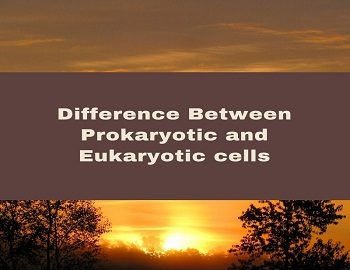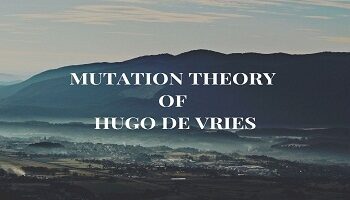Table of Contents
What do you mean by Prokaryotic Cells?
Prokaryotic cells have a single membrane or one envelope system where there exist no definite cell organelles. The protoplasm is not differentiated to the nucleoplasm and cytoplasm and the genetic material occurs without any nuclear membrane. The naked genetic material is called a nucleoid. The bacteria and blue-green algae are together known as prokaryotes as they are lack in membrane-bound organelles.
What do you mean by Eukaryotic Cells?
Eukaryotic Cells have a double membrane or two envelope system of organization. They bear membrane-bound organelles like mitochondria and chloroplast etc. as well as non-membrane organelles. Each organelle of the cell performs a specific function in a well-organized manner.
Difference Between Prokaryotic and Eukaryotic cell:
The following are the difference between prokaryotic and eukaryotic cells-
| Prokaryotic Cell | Eukaryotic cell |
|---|---|
| It has one envelope system. | It has two envelope system. |
| It is small in size (0.1 to 5.0 μm) in diameter. | It is comparatively larger in size (3.0 to 30 μm) in diameter. |
| Cell wall is formed of peptidoglycan. | Cell wall is formed of chitin in fungi, cellulose in green plants and absent in animal cells. |
| The cytoplasm lacks in mitochondria, endoplasmic reticulum, golgi apparatus, centrioles, microfilaments and microtubules etc. | The cytoplasmic contains the mitochondria, endoplasmic reticulum, golgi apparatus, centrioles, microfilaments and microtubules etc. |
| Ribosomes are of 70S type. | Ribosomes are of 80S type. However, 70S ribosomes occur in plastids and mitochondria. |
| Cell membrane may infold to form mesosomes or photo-synthetic lamellae (thylakoids) located freely in cytoplasm. | Cell membrane does not form mesosomes or photosynthetic lamellae. |
| A well-organised nucleus is not found (Nuclear material without nuclear membrane). | A well-organised nucleus is found. |
| DNA is circular associated with few proteins and found in the cytoplasm. | DNA is linear associated with large proteins and found in the nucleus. |
| Transcription and translation takes place in the cytoplasm. | Transcription occurs in the nucleus and the translation in the cytoplasm. |
| Spindle fibres are not formed during cell division. | Spindle fibres are formed during cell division. |
| Cytoplasm does not exhibit streaming movements. | Cytoplasm exhibits the streaming movements. |
| Sap vacuoles are absent and only gas vacuoles are found. | True or sap vacuoles are found. |
| Flagella does not show 9+2 fibrillar arrangement. | Flagella, if present, shows 9+2 fibrillar arrangement. |
| Process of endocytosis and exocytosis does not occur. | Process of endocytosis and exocytosis is quite common. |
| Nucleolus is absent. | One or more nuclei are found in the nucleus. |









Comments (No)